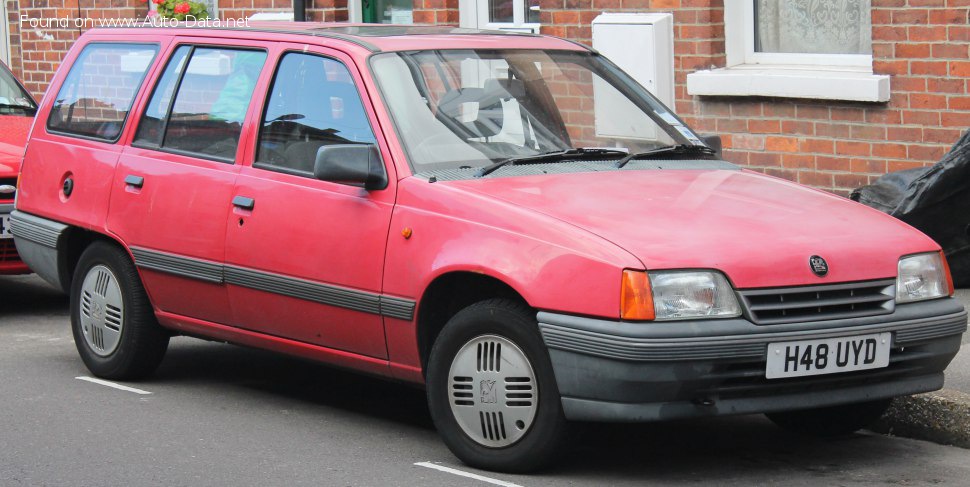The Vauxhall Astra MK2 Estate: A Forgotten Classic? A Deep Dive into an Underrated Workhorse
The Vauxhall Astra. A name synonymous with practicality, affordability, and reliability, especially in the UK. While the modern Astra continues to grace our roads, the second-generation Astra, the MK2, might be slipping from the collective memory. But what about the Estate version? Often overlooked, the Astra MK2 Estate was a workhorse of its time, a reliable family car, and a practical hauler. This article delves into why the Vauxhall Astra MK2 Estate deserves a second look, examining its features, history, and whether it truly qualifies as a “forgotten classic.”
A Brief History of the Vauxhall Astra MK2 Estate
The Vauxhall Astra MK2, also known as the Opel Kadett E in continental Europe, was launched in 1984 and replaced the Kadett D. It represented a significant step forward in terms of aerodynamics and design compared to its predecessor. The Estate variant, introduced alongside the hatchback and saloon models, quickly became a popular choice for families and businesses alike. Its spacious load area, coupled with Vauxhall’s reputation for durability, cemented its place in the British motoring landscape. Production ran until 1991, paving the way for the Astra MK3.
Key Features and Specifications of the Astra MK2 Estate
The Astra MK2 Estate offered a range of engines and trim levels, catering to various needs and budgets. Here’s a breakdown of some key features:
- Engine Options: Wide range of petrol and diesel engines, including:
- 1.2L, 1.3L, 1.4L, 1.6L, 1.8L petrol engines
- 1.6L and 1.7L diesel engines (later turbo diesel options were also available)
- Transmission: 4 or 5-speed manual transmissions were standard, with automatic transmissions available on some models.
- Body Style: Estate (5-door)
- Load Capacity: Impressive for its class, offering significant cargo space with the rear seats up or folded down. This was a major selling point.
- Trim Levels: Various trim levels were offered, including Base, L, GL, GLS, and GTE (performance-oriented).
- Suspension: MacPherson strut front suspension and a torsion beam rear axle provided a comfortable ride and decent handling.
- Fuel Economy: Generally, the Astra MK2 Estate offered reasonable fuel economy, especially with the diesel engines.
The Astra MK2 Estate’s Strengths: Why It Was Popular
The Astra MK2 Estate’s success wasn’t accidental. Several factors contributed to its popularity:
- Practicality: The estate body style provided ample space for families, luggage, and work-related cargo.
- Reliability: Vauxhall had built a reputation for producing robust and reliable vehicles. The Astra MK2 Estate largely lived up to this reputation.
- Affordability: The Astra MK2 was competitively priced, making it accessible to a wide range of buyers.
- Availability of Spares: A vast network of Vauxhall dealerships and independent garages ensured readily available spare parts.
- Ease of Maintenance: The Astra MK2 was relatively simple to maintain and repair, making it a popular choice for those who preferred DIY maintenance.
Weaknesses and Common Problems
While generally reliable, the Astra MK2 Estate wasn’t without its flaws:
- Rust: Like many cars of its era, rust could be a significant issue, particularly on the body panels and chassis.
- Interior Durability: While functional, the interior plastics could be prone to wear and tear over time.
- Engine Performance: Some of the smaller petrol engines lacked power, especially when fully loaded.
- Handling: While adequate, the handling wasn’t particularly sporty or engaging.
Is the Vauxhall Astra MK2 Estate a “Forgotten Classic?”
Whether the Astra MK2 Estate qualifies as a “classic” is subjective. It certainly possesses some of the hallmarks:
- Age: The car is now over 30 years old.
- Historical Significance: It played a significant role in the automotive landscape of the 1980s and early 1990s.
- Nostalgia Factor: For many, it evokes memories of family holidays, school runs, and everyday life.
- Collectibility: While not as sought-after as some classic cars, well-maintained examples are starting to attract interest from enthusiasts.
However, it also faces some challenges:
- Rarity: While not incredibly rare, finding a pristine, original example can be difficult.
- Value: The market value of the Astra MK2 Estate is generally lower than that of more prestigious classic cars.
- Performance: The performance of some engine variants is not particularly exciting by modern standards.
Ultimately, the Vauxhall Astra MK2 Estate is a deserving candidate for the title of “forgotten classic.” It represents a period of automotive history characterized by practicality, affordability, and reliability. It’s a car that played a significant role in shaping the British motoring landscape, and its enduring appeal lies in its unassuming charm and everyday usability.
Frequently Asked Questions (FAQs)
- What is the best engine to look for in an Astra MK2 Estate? The 1.6L or 1.8L petrol engines offer a good balance of performance and fuel economy. The 1.7L turbo diesel is also a good choice for fuel efficiency.
- What are the common rust areas on the Astra MK2 Estate? Check the sills, wheel arches, door bottoms, and chassis for signs of rust.
- How much does a Vauxhall Astra MK2 Estate cost? Prices vary depending on condition, mileage, and specification. However, you can often find examples for a few thousand pounds or less. Expect to pay more for low-mileage, well-maintained vehicles.
- Are parts still available for the Astra MK2 Estate? Yes, parts are generally still available, although some may be harder to find than others. Online retailers and specialist breakers are good sources.
- Is the Astra MK2 Estate easy to maintain? Yes, the Astra MK2 Estate is relatively easy to maintain and repair, making it a good choice for DIY enthusiasts.



